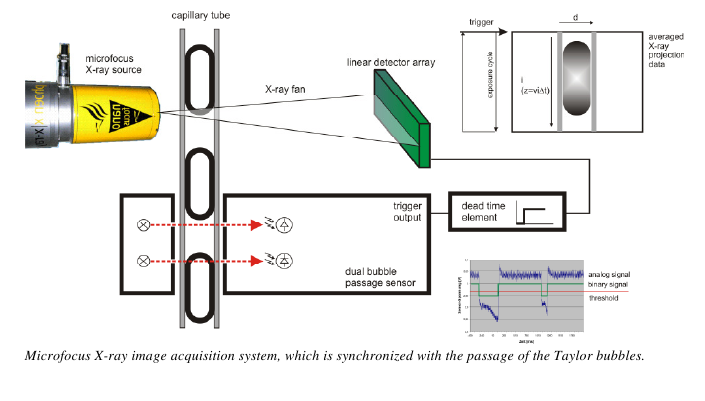You are here
Project Uwe Hampel
X-ray tomography of Taylor bubbles in capillary two-phase flow
Abstract A profound understanding of momentum, heat and mass transfer in capillary multiphase flow is of primary importance from the viewpoint of fundamental science as well as for practical design and operation of new chemical reaction devices, such as monolithic microreactors, miniature heat exchangers, fuel cells and others. Knowledge of the flow topology and precise data of the liquid film thickness, bubble shape and liquid velocity profiles around bubbles on the microscopic scale is a decisive input for the development of heat and mass transfer models as well as interface-resolving CFD codes. Today there is only coarse knowledge on Taylor bubble shape in microchannels available. Within the frame of this project the development of an X-ray tomography method which can disclose the three-dimensional shape of Taylor bubbles in capillary two-phase flow is aimed. The new imaging technique shall be applied to record the bubble shape for different flow types (gas-liquid, liquid-liquid), channel cross-sections, wall materials and capillary numbers and this way provide data for the development of mass transfer models for this type of flow, which is pursued by other partners of the SPP. Core of the measurement technique is a system that provides a digital acquisition of X-ray projections from Taylor bubbles which is synchronized with the passage of the bubbles through the X-ray fan. The X-ray projections are repeatedly acquired by means of a microfocus X-ray imager comprising a custom made pulse-count time-gated X-ray detector. The projection data is reconstructed to cross-sectional images using adapted image reconstruction algorithms. Additional to using a microfocus X-ray source experimental studies using synchrotron radiation are planned. The new measurement approach is unique and goes far beyond the current state of the art in dynamic microscopic flow imaging. The flow structural data acquired by this technique will foster the meso- and microscalic numerical flow model development for capillary multiphase flow.





